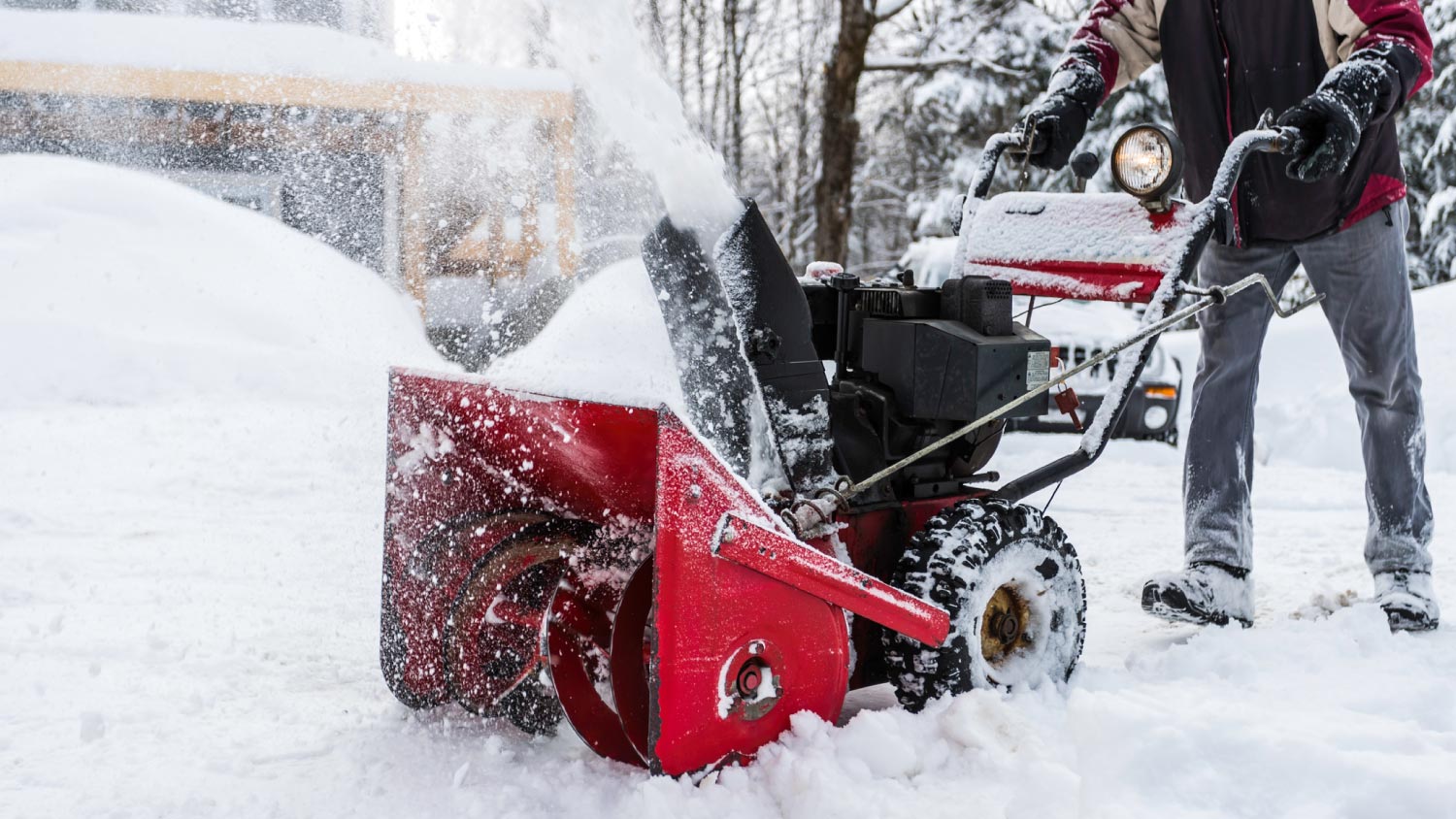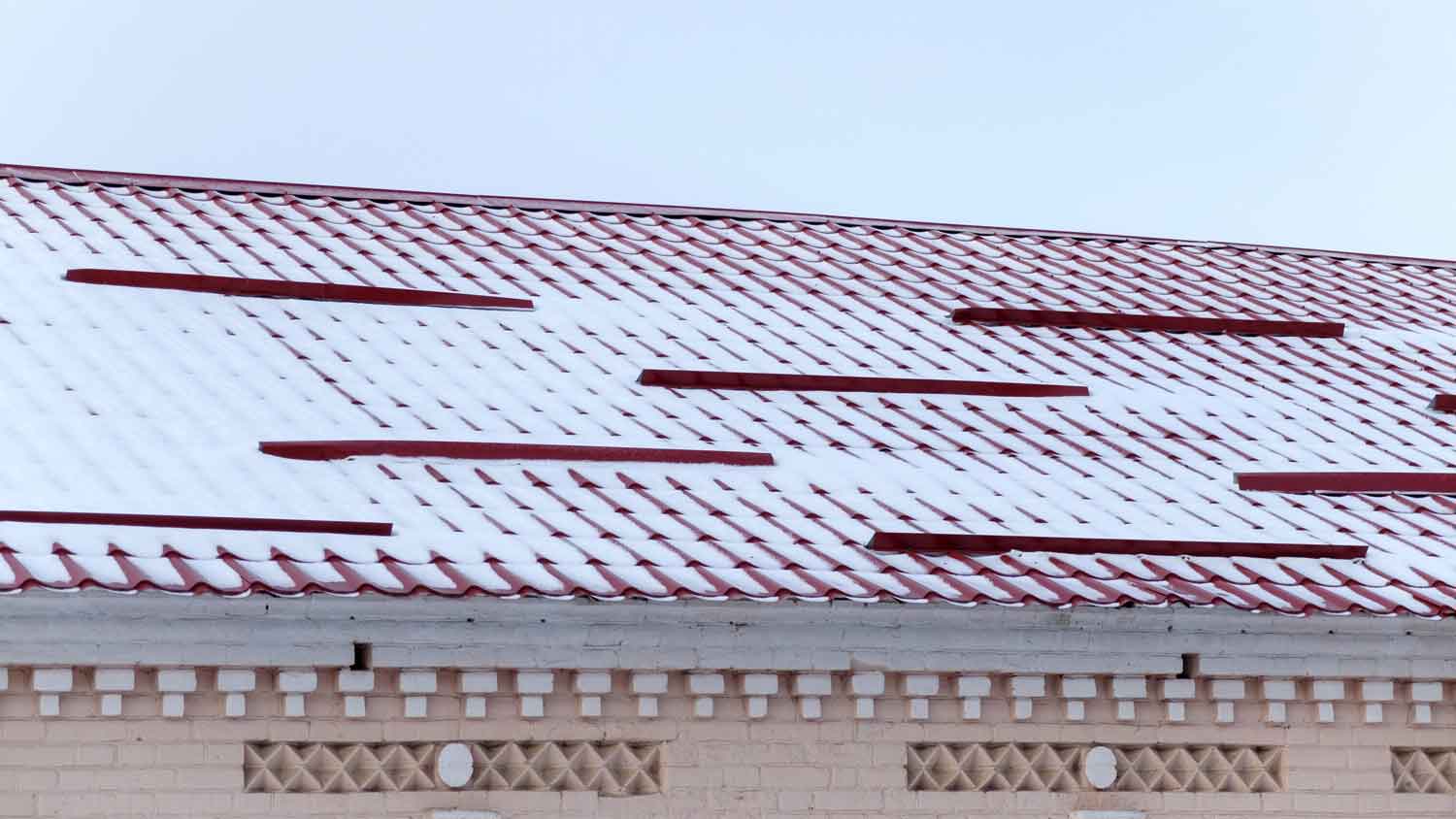
Get the latest snow removal cost estimates, including average prices, key cost factors, and tips to help homeowners budget for safe, efficient snow removal.
These ice-melting alternatives are worth their salt


Using salt-free ice melting methods avoids the environmental impact of traditional rock salt, which can harm soil, aquatic ecosystems, and vegetation, while also being abrasive to pet paws.
Salt can corrode your car's body and undercarriage, damage concrete, and dry out and harm shoes and belongings.
Salt-free alternatives include rubbing alcohol, urea/fertilizer, coffee grounds, sugar beet juice, alfalfa meal, vinegar, heated mats, and heated driveways.
Regular snow removal, gutter maintenance, drainage solutions, and icicle removal help prevent ice formation.
Wherever there is snow and sub-freezing cold, there are patches of slippery ice waiting to create a disaster. While traditional rock salt has been a standby staple for ice removal, there are many compelling reasons to learn how to melt ice without salt.
Rock salt, while known for its ice-melting capabilities, can corrode nearby metals, poison lawns or plants, and hurt sensitive pet paws. We’ve collected top alternatives, from powerful magnesium chloride to eco-friendly options.
Learning how to melt ice without salt is beneficial for several reasons, including protecting animals and the environment. As traditional rock salt dissolves, it can contaminate soil, harm aquatic ecosystems, and damage or kill vegetation. Rock salt is also abrasive and can irritate pet paws. What’s more, it can potentially be harmful to wildlife when ingested.
Aside from benefitting the living elements around the home, opting for salt-free alternatives can save your hardscape and vehicle from chemical salt’s damaging properties. Rock salt can be corrosive to your car’s body and undercarriage, plus it can damage concrete and asphalt. Consider hiring a local snow removal service to de-ice slippery surfaces to ensure safe and effective application.
Before attempting to remove ice without salt, start your snowblower or grab a shovel and remove as much snow as possible. Salt-free ice removal methods work best when they’re applied directly to the ice. Don’t forget to bundle up in warm layers, warm gloves, and winter boots with slip-resistant treads. If you have a lot of snow to remove, be sure to stretch beforehand, take breaks where needed, and lift with your legs rather than your upper body.
Besides its usefulness for disinfecting and cleaning, rubbing alcohol can also be an effective solution for ice removal. To use it, dilute ½ cup of rubbing alcohol in one gallon of hot water and add 10 to 12 drops of dish soap. Once you pour it to melt the ice, remove any excess water with a shovel or a push broom to avoid creating another icy patch.

A key reason why salt melts ice is that it reduces the freezing point of water, allowing ice to transform into liquid even when the temperature is below water's usual freezing point. Similarly, many plant fertilizers feature compounds such as potassium chloride, urea, and ammonium sulfate, all of which can lower the freezing point of water as well. Spread fertilizer wherever you would spread rock salt and allow it to gradually melt. However, be cautious when using it around your landscape, as excess fertilizer can burn your plants the same way it does during the growing season.
Magnesium chloride is a naturally occurring substance that’s processed and turned into high-grade ice melt. It’s excellent at absorbing moisture and creating a brine layer to melt away ice, which is very similar to how rock salt works.
Thanks to its different chemical composition, magnesium chloride doesn’t corrode or poison soil. It’s effective at very low temperatures where salt and many other alternatives won’t have much effect. However, these qualities also make magnesium chloride a more expensive ice-melting option than other options on our list.

The nitrogen content makes coffee grounds an excellent fertilizer and compost additive for your garden, but it also comes in handy for melting ice. Nitrogen naturally reduces the freezing point of water, so applying coffee grounds to icy patches will speed up the melting process. As a bonus, the gritty texture provides anti-slip traction in the meantime.
Available from online retailers or your local garden center, sugar beet juice is another substance that can lower the freezing point of water to melt ice. This solution remains effective even in frigid temperatures, withstanding as low as -20 degrees Fahrenheit.
Alfalfa meal—sold primarily as a commercial fertilizer—also has compounds that lower the freezing point of water. Plus, just like coffee grounds, it provides additional grit to help prevent slipping while the ice melts.
Distilled white vinegar is another substance that lowers ice’s melting point. Dilute it in equal parts of hot water to make an effective deicer. Immediately remove excess water with a push broom or a shovel. Note that vinegar will kill vegetation, so avoid getting the mixture on your lawn or landscaping.
If you’re looking for a low-effort method to remove ice without salt, heated driveway mats are a highly efficient solution. Simply plug the mats into a power source and place them on a porch, along a walkway, or wherever else you want to remove ice. The mats generate heat, effectively melting any snow or ice that covers them.

While it can be a significant investment, a heated driveway presents a permanent solution for ice removal without salt, beet juice, or any other substance that you have to leave your warm home to apply. The cost of a heated driveway is typically around $13,000, but prices can fluctuate anywhere from $3,000 to upwards of $20,000.
The best way to minimize your time spent melting ice is to stay proactive and prevent it from forming in the first place. Here are some of the best ways to keep ice at bay around your home:
Regularly clear snow to prevent it from compacting into ice—the sooner you remove snow, the less likely it is to turn into a hard, icy surface.
Clean your gutters regularly to prevent ice dams from forming.
Consider drainage solutions for icy sidewalks such as a storm drain channel or a French drain.
Improve your driveway’s drainage with a channel drain or a French drain.
Carefully and promptly remove icicles to prevent ice dams from forming.
From average costs to expert advice, get all the answers you need to get your job done.

Get the latest snow removal cost estimates, including average prices, key cost factors, and tips to help homeowners budget for safe, efficient snow removal.

Discover the cost to install snow guards. Learn about average prices, key cost factors, and tips to save on your snow guard installation project.

Are you in the market for a new snow blower but have no idea what size is best? Learn how to pick what size snow blower you need.

There are some things that everyone should know before hiring a professional snow removal service this winter. This list of tips breaks them down for you.

If you’re wondering how to remove snow from driveway without a shovel, you have plenty of options. Consider these tips to create a no-snow zone.

Clearing snow from patios, walkways, and driveways can be a daunting task. Try these top snow removal tips to simplify the process and make your life easier.